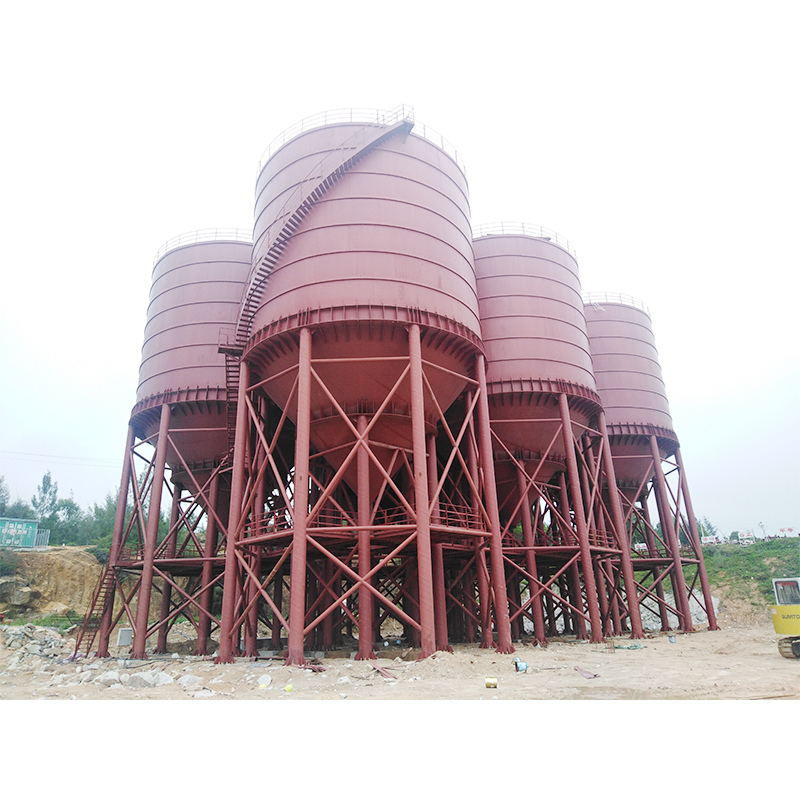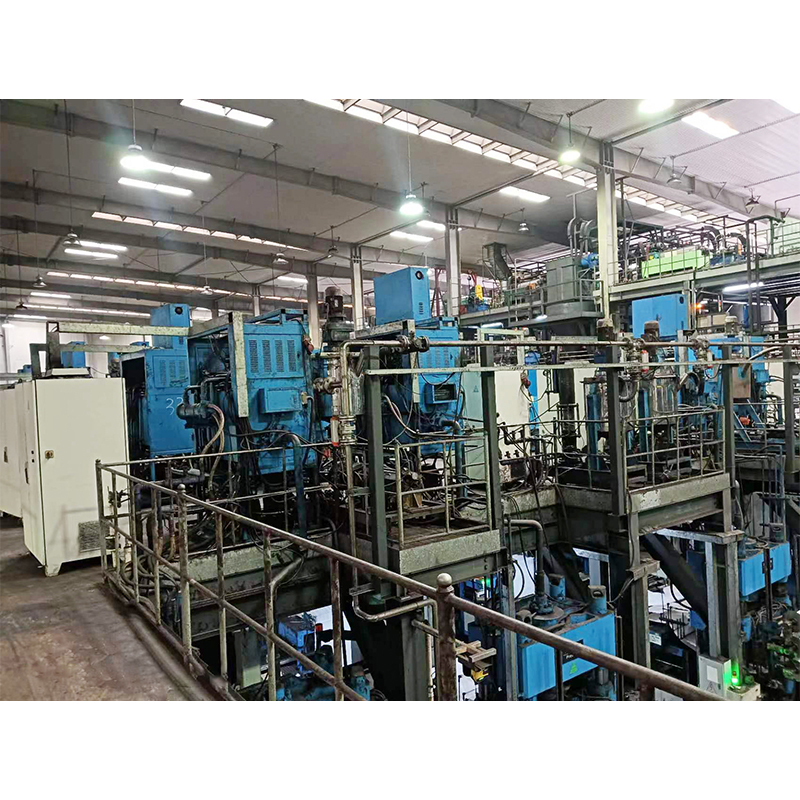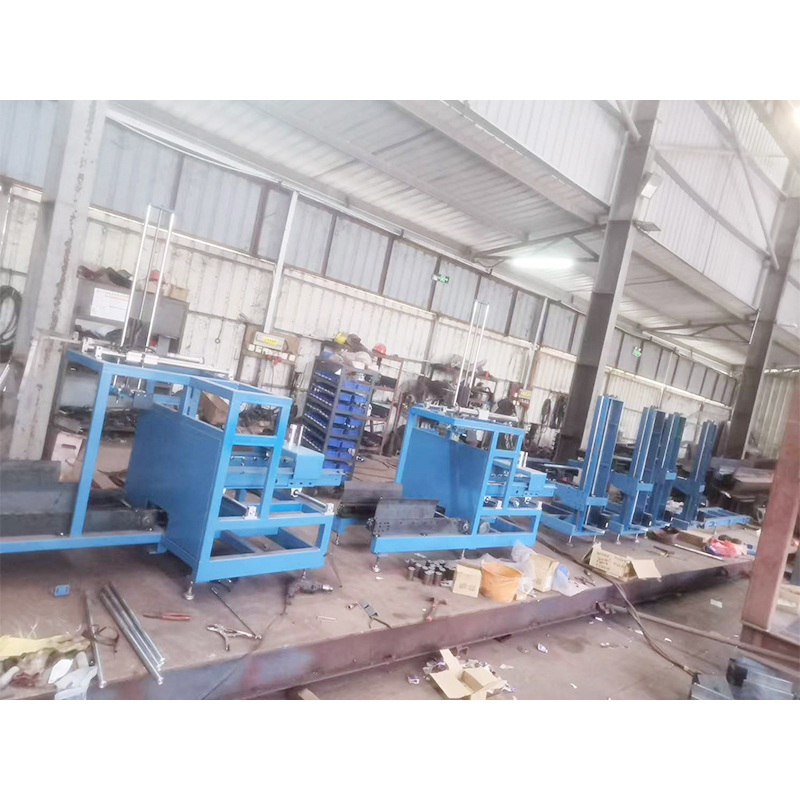How can vertical warehouse and logistics transportation storage systems ensure uninterrupted logistics flow?
Release Time : 2025-11-03
With increasingly scarce urban land resources and ever-growing demands for logistics efficiency from e-commerce and smart manufacturing, vertical warehouse and logistics transportation storage systems are becoming a crucial development direction for modern intelligent warehousing. These systems expand space upwards, transforming traditional flat warehouses into "multi-level skyscrapers," significantly increasing storage density and operational efficiency per unit area. However, high integration and vertical spatial design also bring new challenges—ensuring uninterrupted logistics flow in a multi-level, high-speed, and continuous operating environment has become a core objective of system design and operation.
1. Highly Efficient and Collaborative Vertical Conveying Hubs
The core of a vertical warehousing system lies in vertical conveying equipment, such as high-speed lifts, freight elevators, or screw conveyors. These devices act like elevators in a building, rapidly transferring goods between different floors. To ensure continuous flow, the system typically employs a dual-channel or multi-channel design, achieving separation of "upward and downward" or "inbound and outbound" traffic to avoid cross-traffic waiting. Meanwhile, through frequency conversion control and precise positioning technology, the hoist can complete floor docking within seconds and achieve millisecond-level synchronized start and stop with the horizontal conveyor lines on each floor, ensuring seamless cargo transfer and eliminating process interruptions caused by waiting or misalignment.
2. Intelligent Scheduling System Achieves Global Optimization
The stability of logistics rhythm relies on the "brain"—the collaborative operation of the intelligent warehouse control system and the warehouse management system. The system collects real-time data on location status, equipment operation, and order demand, and uses AI algorithms to dynamically plan the optimal path and work sequence. For example, during peak outbound periods, the system prioritizes scheduling inventory near the exit level to reduce vertical handling; during inbound periods, it automatically allocates vacant locations and guides conveyor equipment to their positions in advance. This proactive scheduling strategy effectively avoids equipment congestion, path conflicts, and resource idleness, ensuring the logistics flow is always operating efficiently.
3. Redundant Design and Fault Self-Healing Mechanism
Any equipment may face sudden failures, especially vertical systems—once the hoist stops, the entire warehouse's logistics chain may be paralyzed. To address this, high-end vertical warehousing systems generally employ redundant designs: critical equipment such as motors, control modules, and power supplies are equipped with backup units, allowing for automatic switching in case of main equipment failure; some systems also feature emergency bypass channels or backup lifting channels to ensure uninterrupted core logistics functions. Furthermore, the system incorporates self-diagnostic and early warning functions, enabling early detection of anomalies and notification of maintenance, achieving "predictive maintenance" and eliminating faults in their nascent stages.
4. Flexible and Modular Architecture Enhances Adaptability
Modern vertical warehousing systems no longer pursue a fixed, "one-size-fits-all" model, but rather evolve towards flexibility and modularity. Through standardized interfaces, conveyor lines, rack units, robots, etc., can be flexibly combined and expanded. When a section requires maintenance or upgrades, the system can automatically transfer logistics tasks to other channels, achieving "hot-swappable" maintenance without affecting overall operation. Simultaneously, the system is compatible with multiple carriers, adapting to the mixed storage and retrieval of different types of goods, avoiding process interruptions due to changes in goods type.
5. Multi-device Collaboration and Caching Mechanisms Ensure Buffer Capacity
In vertical systems, automated storage and retrieval systems (AS/RS), stacker cranes, AGVs, and sorting robots operate in parallel. To prevent a chain reaction caused by a delay in one link, the system employs multi-level buffer zones: temporary storage locations or buffer conveyor lines are set up at each level's entrance/exit and key nodes, forming a "buffer pool." When the preceding equipment is busy, goods can be temporarily stored, and subsequent equipment retrieves goods in sequence, achieving "peak shaving and valley filling" and smoothing logistics fluctuations. Simultaneously, through a unified scheduling platform, all equipment shares a task queue, dynamically adjusting the operational rhythm to ensure a balanced and smooth overall process.
Ensuring uninterrupted flow in a vertical warehouse and logistics transportation storage system does not rely on a single technology, but rather on multi-dimensional collaboration of "high-efficiency hardware, intelligent software, structural redundancy, and operational flexibility." From high-speed elevators to the intelligent scheduling brain, from fault warnings to buffer adjustments, every link serves "continuous flow." In the future, with the deep integration of technologies such as 5G, IoT, and digital twins, vertical warehousing will become more autonomous, resilient, and adaptive, truly becoming a "non-stop intelligent logistics heart" and providing solid support for the modern supply chain.
1. Highly Efficient and Collaborative Vertical Conveying Hubs
The core of a vertical warehousing system lies in vertical conveying equipment, such as high-speed lifts, freight elevators, or screw conveyors. These devices act like elevators in a building, rapidly transferring goods between different floors. To ensure continuous flow, the system typically employs a dual-channel or multi-channel design, achieving separation of "upward and downward" or "inbound and outbound" traffic to avoid cross-traffic waiting. Meanwhile, through frequency conversion control and precise positioning technology, the hoist can complete floor docking within seconds and achieve millisecond-level synchronized start and stop with the horizontal conveyor lines on each floor, ensuring seamless cargo transfer and eliminating process interruptions caused by waiting or misalignment.
2. Intelligent Scheduling System Achieves Global Optimization
The stability of logistics rhythm relies on the "brain"—the collaborative operation of the intelligent warehouse control system and the warehouse management system. The system collects real-time data on location status, equipment operation, and order demand, and uses AI algorithms to dynamically plan the optimal path and work sequence. For example, during peak outbound periods, the system prioritizes scheduling inventory near the exit level to reduce vertical handling; during inbound periods, it automatically allocates vacant locations and guides conveyor equipment to their positions in advance. This proactive scheduling strategy effectively avoids equipment congestion, path conflicts, and resource idleness, ensuring the logistics flow is always operating efficiently.
3. Redundant Design and Fault Self-Healing Mechanism
Any equipment may face sudden failures, especially vertical systems—once the hoist stops, the entire warehouse's logistics chain may be paralyzed. To address this, high-end vertical warehousing systems generally employ redundant designs: critical equipment such as motors, control modules, and power supplies are equipped with backup units, allowing for automatic switching in case of main equipment failure; some systems also feature emergency bypass channels or backup lifting channels to ensure uninterrupted core logistics functions. Furthermore, the system incorporates self-diagnostic and early warning functions, enabling early detection of anomalies and notification of maintenance, achieving "predictive maintenance" and eliminating faults in their nascent stages.
4. Flexible and Modular Architecture Enhances Adaptability
Modern vertical warehousing systems no longer pursue a fixed, "one-size-fits-all" model, but rather evolve towards flexibility and modularity. Through standardized interfaces, conveyor lines, rack units, robots, etc., can be flexibly combined and expanded. When a section requires maintenance or upgrades, the system can automatically transfer logistics tasks to other channels, achieving "hot-swappable" maintenance without affecting overall operation. Simultaneously, the system is compatible with multiple carriers, adapting to the mixed storage and retrieval of different types of goods, avoiding process interruptions due to changes in goods type.
5. Multi-device Collaboration and Caching Mechanisms Ensure Buffer Capacity
In vertical systems, automated storage and retrieval systems (AS/RS), stacker cranes, AGVs, and sorting robots operate in parallel. To prevent a chain reaction caused by a delay in one link, the system employs multi-level buffer zones: temporary storage locations or buffer conveyor lines are set up at each level's entrance/exit and key nodes, forming a "buffer pool." When the preceding equipment is busy, goods can be temporarily stored, and subsequent equipment retrieves goods in sequence, achieving "peak shaving and valley filling" and smoothing logistics fluctuations. Simultaneously, through a unified scheduling platform, all equipment shares a task queue, dynamically adjusting the operational rhythm to ensure a balanced and smooth overall process.
Ensuring uninterrupted flow in a vertical warehouse and logistics transportation storage system does not rely on a single technology, but rather on multi-dimensional collaboration of "high-efficiency hardware, intelligent software, structural redundancy, and operational flexibility." From high-speed elevators to the intelligent scheduling brain, from fault warnings to buffer adjustments, every link serves "continuous flow." In the future, with the deep integration of technologies such as 5G, IoT, and digital twins, vertical warehousing will become more autonomous, resilient, and adaptive, truly becoming a "non-stop intelligent logistics heart" and providing solid support for the modern supply chain.







